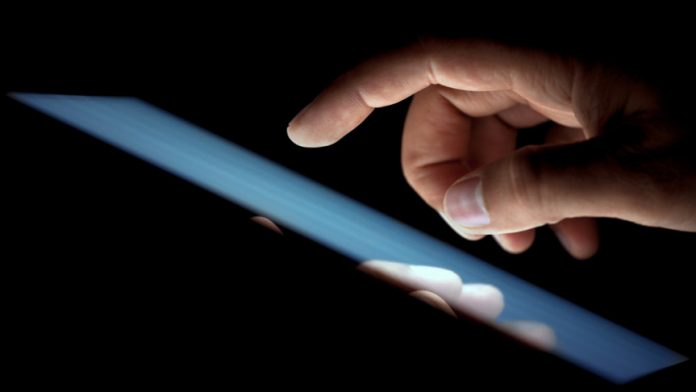Touchscreens have revolutionized the way we interact with many forms of tech, including smartphones. But have you ever wondered how they work?
Here we explore the most common types of touchscreen around and address some commonly asked questions about them.
RELATED: 11 EASY WAYS TO REDUCE YOUR SCREEN TIME
How does a touch screen detect your finger?Touchscreens are amazing pieces of a kit. They are so ubiquitous today that it is hard to imagine, or remember (if you’re old enough), a time when they didn’t.
First developed in the 1960s by E. A. Johnson at the Royal Radar Establishment, UK, they were initially devised to help support air traffic control. But it wouldn’t be until the 1990s and 2000s when touchscreens would become very common.
In 1993, Apple released one of the first touchscreen devices, the ill-fated Newton PDA, that came complete with, in theory, handwriting recognition. But touchscreen’s ‘Golden Age’ arguably started with the release of the first iPhone in 2007.
The rest, as they say, is history. But how does the tech work?
As it turns out there are actually several different methods of producing touchscreens. Each one is incredibly ingenious with the only real commonality between them being the end result – a touchable screen.
Here are some of the most common forms of the touchscreen.
1. Resistive Touchscreens are the most commonResistive touchscreens are by far the most common and they are also one of the simplest, technologically-wise types. Consisting of three main layers, these touchscreens take advantage of electrical resistance to work.
The uppermost layer consists of flexible conductive polyester plastic. This sits on top of a layer of conductive glass with a layer of insulating membrane sandwiched between the two.
When you press your finger down on the polyester layer, you force it to depress and touch the glass layer below. This completes an electrical circuit; much like pressing a key on a keyboard.
A control chip connected to the screen then determines the coordinates of the place you touched. Simple yet effective.
2. Capacitive Touchscreens are one of the oldest formsCapacitive touchscreens are one of the oldest solutions and were invented by E. A. Johnson back in the 1960s. These types of the touchscreen are composed of two layers of conductive glass that are separated by an insulator — just like a regular capacitor.
When your finger approaches the screen, it disrupts the electrical field by a certain amount depending on where your finger is. The position can then be determined using a set of sensors to detect the decrease in electrical current at the point of contact.
Unlike other touchscreens, capacitive ones can actually be touched in multiple locations simultaneously. They also cannot be used with a plastic stylus, as plastic is an electrical insulator.
3. Projected Capacitive Touchscreen can be used with glovesSimilar to traditional conductive touchscreens, projected capacitive touchscreens have some advantages over their rivals. One of the main pros is that they can be used when the operator is using surgical gloves or thin cotton gloves.
These touchscreens consist of a sheet of glass with embedded transparent electrode films and an IC chip. This setup creates a 3D electrostatic field just above the screen — hence the name.
“A change in the electrical currents is detected when a finger touches the screen. A touchpoint is then detected. Projected capacitive touchscreens are being used more and more in different industries, and are generally chosen over regular capacitive touchscreens because of their durability.” – Science ABC.
4. Infrared Touchscreens use light to detect your fingerInfrared touchscreens, as the name suggests, use infrared light waves to determine where a user places their finger on a screen. A grid of LEDs fire IR light at another set of light-detecting photocells directly opposite the LED IR emitters.
IR light is shone directly in front of the screen to form a grid, a bit like an invisible spider’s web. When you touch the screen, your finger blocks the IR light ray(s) at the point of contact.
A computer chip is then used to triangulate where the disruption has occurred. These types of touchscreens are used in things like Sony Reader ebooks.These work just as well with fingers as they do with styluses, for obvious reasons.
5. Surface Acoustic Wave Touchscreens use sound instead of lightSurface Acoustic Wave (SAW) touchscreens, work much the same as IR ones with the exception that they use acoustic waves rather than light. In most cases, ultrasonic sound waves are generated at the edges of a screen which reflect back and forth across its surface.
When you touch the screen, your finger interrupts the sound waves and absorbs some of its energy. The screen’s microchip is then able to calculate the point of contact.
6. Lightpens are something of a dinosaur in the touchscreen worldA very early form of touchscreen tech, lightpens worked in a very different manner to modern solutions. When they were developed, computer screen images were drawn using electron beams that scanned back and forth; just like old cathode ray TVs.
The pen had an integrated photoelectric cell that detected the electron beam as it passed by. This sent a signal down a cable and the computer was able to calculate the relative position of the pen at any one time. Lightpens like this were generally used to either select menu items or text on a screen. They tended to be used much like computer mice today, and could also be used to sketch onto the screen.
How does Apple touch screen work?
The vast majority of iPhone touchscreens use capacitive touchscreen technology. As we have already seen, these consist of layers of capacitive material whose electrical charge is disrupted when you touch the screen.
“When you touch the screen, the device will notice a change in the charge because your skin conducts electricity at a rate different than that of the glass or other material used in the screen. The charge is so low as to pose no safety or health risk.
Because the technology doesn’t rely on a screen flexing in the same way as resistive technology, the system is able to detect light contact with the screen in multiple places simultaneously along with the movement of the fingers.”
Why don’t my fingers work on touch screens?You may be one of the rare individuals that suffer from something called “zombie fingers.” This is where users complain about a lack of responsiveness to their finger or fingers when using a touchscreen.
A lot of touchscreens nowadays are of the capacitive kind, you don’t actually need to touch the screen to make it work. The vast majority of people use their index finger to operate a touchscreen, but this can cause issues for some.
Depending on the length of your other fingers, they may also get dragged near the surface of the screen. This can mean that they get close enough to disrupt the electrical field, which may confuse the computer chip.
Another reason is that the operator’s fingers have more callus than normal. Being composed of dead cells, calluses can act as an insulator and arent very conductive.
But, of course, it could mean the touchscreen is damaged or faulty. You might want to consider getting it checked by a qualified, and experienced, technician.
If you do suffer from “zombie fingers” it might be time to consider using a stylus instead.






























